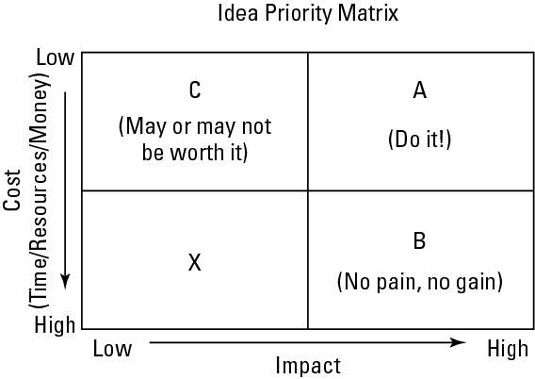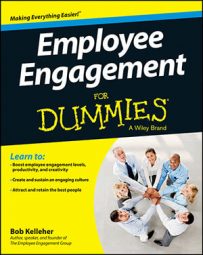Researchers overwhelmingly agree: Engaged employees drive innovation. Engaged employees are empowered to seek ways to innovate, whether that means improving the customer experience, boosting profitability, building the brand, improving marketing, improving quality, or simply being more creative.
Too often, people think innovation is limited to research and development, technological advances, or filing a new patent. But really, innovation can occur in any industry, regardless of company size or maturity. It can also occur in any department, by any employee.
Any change leading to a successful business process improvement constitutes innovation. The bottom line: Whether you realize it or not, innovation is critical to the health of your business.
Indeed, recent research by Gallup found that 61 percent of engaged employees feed off the creativity of their colleagues, compared to a mere 9 percent of disengaged employees. In addition, it found that 59 percent of engaged employees believe their job brings out their most creative ideas, compared to only 3 percent of disengaged employees.
This links to the customer side of the business as well; Gallup found that 74 percent of engaged employees give their customers new ideas, compared to only 13 percent of disengaged employees. And in an interesting chicken-or-egg type way, innovation also drives employee engagement.
Unfortunately, many leaders fail to create a safe environment for employees to contribute ideas. Worse, they create an environment in which new ideas are met with rejection.
Leadership teams that want to kill employee engagement and initiative should simply tell employees that they can't do something “because that's not how we do it here” or “because we've tried that before” or “because management will never accept that” or “because it isn't policy.”
This type of “because” culture ultimately maintains the status quo — and the status quo simply doesn't breed creativity or innovation. Companies fail when they stop evolving their product or service, become complacent, are afraid to fix what isn't yet broken, worry about the investment necessary to innovate, or worry about failure.
If your company has a “because” culture, odds are, it's lacking in innovation, empowerment, and engagement. This kind of firm's growth will be lower than its peers, client satisfaction levels will be lower than the industry average, and voluntary employee turnover is higher than the competition. You're also most likely retaining only your marginally engaged employees.
All too often, leaders become protective of what they've created and fail to engage their employees to help them create or innovate. Countless leadership teams surround themselves with people who think just like them. Birds of a feather may flock together, but they don't innovate!
Instead of a “because” culture, why not try for a “why not?” culture? Instead of rejecting employees’ ideas “just because,” give them a whirl, just to see what happens. Even better, seek out those ideas.
Sure, you'll have some misses, but you'll also have some hits! Continuous improvement is about challenging the norm. Besides, actually listening to employees allows them to become even more comfortable about expressing their ideas, which naturally increases their level of engagement.
Of course, not all ideas will be winners. For some guidance on which ideas to pursue and which to set aside, check out the idea priority matrix in this figure. As you can see, it favors ideas that are low in cost and high in impact over all others.

Ask yourself: Does your culture underwrite creativity, or is it afraid of mistakes? Do risk takers get punished? Companies that foster a higher level of expression from their employees (and that accept that missteps are part of the creative process) will not only see more innovation, but also have more engaged employees.

